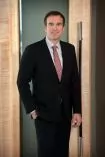It's that time of year: costumes and candy, haunted houses and hayrides. And all those tricks and treats add up to a $7.4 billion commercial industry around the holiday, a figure that exceeds the annual revenue of the domestic recording industry. One sector, haunted theme attractions, has seen particular growth in recent years to the tune of over $300 million. Now, there are all sorts of haunted houses – from local nonprofit fundraisers that decorate some vacant office space with cheesy drugstore garb and a couple strobe lights, to multi-million-dollar operations that promise to (and do) terrify for $30 or more per ticket. The scale and content of any of these attractions determines the extent to which legal counsel and / or a specialized consultant is required for the venture, but all of these so-called "haunts" will encounter issues related to liability insurance, labor laws, and local building and fire codes.
For this article, though, I'll address an often-overlooked aspect of themed attractions that can raise serious legal issues if not properly addressed: the use of music in conjunction with the attraction. Let's open that can of creepy copyright worms.
With some exceptions, every public venue that plays music in its space for its patrons – restaurants, bars, clubs, stadiums, retail stores, music venues, etc. – pays (or is supposed to pay) an annual fee to each of the three performing rights organizations (or "P.R.O." – they are ASCAP, BMI & SESAC) for a license to do so. The fee covers a blanket license to publically perform all works in the PRO's catalogue (between them, basically every song ever written), and the amount of the fee is based on various factors such as the size and nature of the venue and the context in which the music is played. It doesn't matter if the song is "performed" via a recording over loudspeakers or if it's performed live by a band.
"But wait," says the haunted house proprietor, "I bought the Halloween Hits Volume 13 CD and paid for my Monster Mash download on iTunes; that means I can play it wherever and however I want, right?" Well, no; at least not publically. What constitutes a public performance with regard to a haunted attraction's music licensing obligations will vary according to factors such as the size of the haunt and the number of loudspeakers used, all determined by the PROs' rules. So while having the neighborhood kids over for a scary run through the garage probably isn't concerning, if the attraction involves paid admission to an old dilapidated mansion or abandoned prison then it's probably safe to say that playing music there without paying for a PRO license runs afoul of copyright law.
Luckily, for most haunts operating at this scale, getting a performance license from the PROs to cover the music and avoid liability will most likely be less expensive than, say, wages for zombies or hair and makeup artists. The bigger problem arises when the PRO licenses don't cover the attraction's use of the music: PROs can only grant non-dramatic performance rights, or so-called "small rights," to publically perform the music. When a musical work is used in conjunction with a dramatic performance, under certain circumstances the user must obtain a different license that covers the dramatic performance or "grand performance" of the composition.1 Notably, the PROs cannot grant these licenses; rather, permission must be obtained directly from the rights holder, usually the author and / or publisher of the musical work. As such, these licenses can also be more expensive.
So here's where it gets tricky – and much less treat-y – for haunt proprietors. By their very nature, many uses of a musical work in a haunted attraction might very well be considered a dramatic performance that requires a license directly from the copyright holder. The US Copyright Act does not define the terms "dramatic" and "nondramatic" performances, and it is not often clear where the lines are drawn. The general rule, however, is that if the musical composition helps tell the story, carries forward a plot, or is woven into the action, then the dramatic performance right is implicated. It's easy to imagine how music would serve to do exactly that in a haunted attraction, especially where the different-themed rooms each feature carefully scripted performances or reenactments largely based on prior works. So while the lines might be blurred as to when a dramatic performance license is required in general, if a haunted house features a butcher-knife-wielding guy in a spot-on Michael Myers costume – and that iconic Halloween movie franchise theme is simultaneously blaring in the background – that use of the music likely requires a dramatic performance license directly from John Carpenter (yes, he also wrote the score).
Footnote
1. The term "grand rights" is often mistakenly used to collectively refer to the rights involved in any license to dramatically perform a musical work. Technically, however, the term "grand rights" only refers to the dramatic performance of a work that was originally part of what was historically known as a grand musical play or grand opera, but which has come to include all dramatico-musical works. Of course, compositions that do not have their origin as part of a dramatico-musical work may also be performed dramatically; while their performance does not implicate "grand rights" per se, the same permissions must be directly obtained from the rights holder for such a use in the form of a "dramatic performance license."
The content of this article is intended to provide a general guide to the subject matter. Specialist advice should be sought about your specific circumstances.
